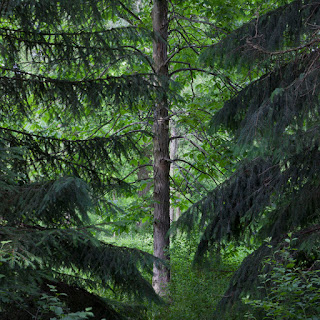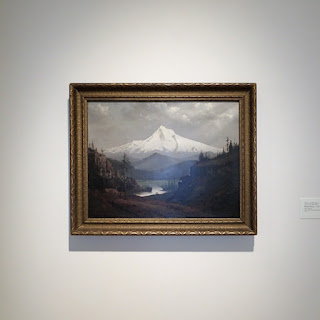"The Renewable Wilderness is Within" is a quote taken from one of the more unusual sculptures in the Lynden Garden collection. The sculpture, "Open-Air Writing Desk" by David Robbins, is unusual for several reasons. One is its location away from the mown lawns where nearly all of the other sculptures reside, which is a part of the Lynden property to which I am drawn--for its relative wildness.
As one of the 2015 Artists in Residence I have not lived in the barn since March. But I have been active, making day trips periodically to check on things, to see how the seasons affect the mood of the place. This post is a brief update with a very small selection of images and an invitation to see many more posted on flickr.
I have long admired and enjoyed the Lynden Sculpture Garden. As a photographer, the opportunity to spend a more concentrated time there as Artist in Residence provides perspectives to which I have not previously attended. I have been able to see the familiar in unfamiliar ways, such as this small, minimalist sculpture called "Windfall" by Robert Murray.
I am also privileged to observe many more than I would otherwise of the frequent transient interventions that are a regular feature of the programming, such as this detail of a cyanotype installation by Milwaukee artist Tori Tasch.
The "gardens" part of the Lynden Sculpture Gardens have also drawn my attention far more than they have in the past.
And the formal gardens are only a portion of the floral displays. I caught this sunrise surprise out in the wilder section of the grounds.
And while nature is not characteristically symmetrical, I seem to find it in unexpected places.
Though asymmetry suits me just fine.
Last Saturday I gave a guided tour of the gardens and grounds. I was asked if I have a favorite sculpture and I do--while it lasts. As I told the group, there are so many sculptures throughout the grounds that it is easier to tick off the short list of those for which I find less affinity. But I do have a favorite and it is "The Feast," a temporary installation by Linda Wervey Vitamvas. When it was first installed over a year ago it consisted of two shelves placed next to the shoreline on the pond. On the shelves were a large set of earthenware vessels, mostly plates, bowls and chalices. These were made from clay harvested on the Lynden property. Over time the unglazed pieces began to decay and fall into the water. Recently the two shelves came entirely unmoored. The few pieces of pottery that remain now float among the lily pads. I have enjoyed watching entropy take its toll, nature reclaim the art, the earth reabsorb the earthenware.
Next week I will once more be ensconced in the barn on the premises, an artist in residence in fact as well as in name. So, there will be further updates, be assured.
To see more of my work go to the 2015 Artist in Residence album on flickr.
I've also posted separate albums of special events at the Lynden. If you missed the in earlier posts, I invite you to check them out as well.
The Winter Carnival was in February (left).
The 5th Anniversary celebration was in May (below).
The Fairy Queen Fantasy was performed on the grounds in June (left).
Thursday, July 16, 2015
Wednesday, July 8, 2015
Art in Portland, OR: personal selections.
Although my primary reason for a recent trip to Portland, OR was to attend a convention (the annual Unitarian Universalist General Assembly), I did manage to skip out long enough to visit the Portland Art Museum. Here are a few of the things that caught my eye.
The museum provides several types of offerings even before you enter the building.
There is a small, enclosed courtyard between the two buildings that make up the museum campus. Modern and contemporary sculptures have a home there. Deborah Butterfield's horses have long had a particular appeal for me. It was my great fortune to have had her as an instructor at UW--Madison (way back when!) This one, entitled "Dance Horse," has a distinctive and compelling gesture, at least for me.
The entry plaza was graced with a series of decorated pianos that had been sponsored by businesses and civic groups.
The decorations were eclectic and many of them reflected the interests of the sponsoring organizations.
All of the pianos were playable and several could be heard being played at any one time, both outside and inside the museum. The inharmonious cacophony made my stroll through the collection more poignant. "No Wrong Notes" is a quote by Thelonious Monk. Wonder what he would have made of this arrangement. I thought it was fun. It was certainly an entertaining draw.
The outside of the building itself serves as a kind of canvas as enormous posters are hung on the walls to promote the current exhibitions inside. This one is for a show called "Gods and Heroes: Masterpieces from the École des Beaux-Arts, Paris!" The sculpture is "Floating Figure" by Gaston Lachaise.
Another giant poster depicts Chinese artist Ai Wei Wei peering back at you. I found this juxtaposition with one of the sculptures in the courtyard to be trenchant.
Inside you could see Ai Wei Wei's "Circle of Animals/Zodiac Heads: Gold." Here you see a close up of one of the 12 animal heads that make up the zodiac.
Not having a lot of time, I did a quick run-through of the historical galleries to get a flavor. I noted that the local landscape and cultures were a common motif, as you might expect. Mount Hood is a particularly iconic favorite, seen here in an 1885 painting by William Samuel Parrott.
It's hard for a visitor to Portland to miss Mount Hood. I didn't get quite the Romantic view of it that the 19th Century painters sought, but I digress.
I'm quite fond of Inuit and Northwest Coast Indian art and so was looking forward to seeing what Portland had to offer in this vein. I was not disappointed. This tiny set of ivory figures, called "Tupilak," are by unknown Angmagssalik Inuit artists.
This "Drum Dancer" is by Aqjangajuk Shaa, a Canadian and Cape Dorset Inuit.
In the section on late 20th Century abstraction I found this atypical (for me anyway), thickly impastoed painting by Jules Olitski. I seem to recall having seen one of these somewhere before but I'm much more familiar with his sprayed color field paintings.
Walking around a corner, as I did, one can come upon this huge earthenware piece by Richard Notkin in a manner that puts you up close to its textured, relief surface, which is quite interesting.
However, only when you walk back away from it do the variations in the burnt clay surfaces resolve themselves into the overall gestalt. It's called "The Gift."
No, this isn't the museum any longer. I also went for a hike into a small corner of Forest Park, billed as the "largest urban forest in the world." At the trailhead I found this unattributed suite of sculptures. My story about hiking into the largest urban forest will appear on my other blog, Urban Wilderness, when I get around to it. I hope you'll join me again then.
The museum provides several types of offerings even before you enter the building.
There is a small, enclosed courtyard between the two buildings that make up the museum campus. Modern and contemporary sculptures have a home there. Deborah Butterfield's horses have long had a particular appeal for me. It was my great fortune to have had her as an instructor at UW--Madison (way back when!) This one, entitled "Dance Horse," has a distinctive and compelling gesture, at least for me.
The entry plaza was graced with a series of decorated pianos that had been sponsored by businesses and civic groups.
The decorations were eclectic and many of them reflected the interests of the sponsoring organizations.
All of the pianos were playable and several could be heard being played at any one time, both outside and inside the museum. The inharmonious cacophony made my stroll through the collection more poignant. "No Wrong Notes" is a quote by Thelonious Monk. Wonder what he would have made of this arrangement. I thought it was fun. It was certainly an entertaining draw.
The outside of the building itself serves as a kind of canvas as enormous posters are hung on the walls to promote the current exhibitions inside. This one is for a show called "Gods and Heroes: Masterpieces from the École des Beaux-Arts, Paris!" The sculpture is "Floating Figure" by Gaston Lachaise.
Another giant poster depicts Chinese artist Ai Wei Wei peering back at you. I found this juxtaposition with one of the sculptures in the courtyard to be trenchant.
Inside you could see Ai Wei Wei's "Circle of Animals/Zodiac Heads: Gold." Here you see a close up of one of the 12 animal heads that make up the zodiac.
Not having a lot of time, I did a quick run-through of the historical galleries to get a flavor. I noted that the local landscape and cultures were a common motif, as you might expect. Mount Hood is a particularly iconic favorite, seen here in an 1885 painting by William Samuel Parrott.
It's hard for a visitor to Portland to miss Mount Hood. I didn't get quite the Romantic view of it that the 19th Century painters sought, but I digress.
I'm quite fond of Inuit and Northwest Coast Indian art and so was looking forward to seeing what Portland had to offer in this vein. I was not disappointed. This tiny set of ivory figures, called "Tupilak," are by unknown Angmagssalik Inuit artists.
This "Drum Dancer" is by Aqjangajuk Shaa, a Canadian and Cape Dorset Inuit.
In the section on late 20th Century abstraction I found this atypical (for me anyway), thickly impastoed painting by Jules Olitski. I seem to recall having seen one of these somewhere before but I'm much more familiar with his sprayed color field paintings.
Walking around a corner, as I did, one can come upon this huge earthenware piece by Richard Notkin in a manner that puts you up close to its textured, relief surface, which is quite interesting.
However, only when you walk back away from it do the variations in the burnt clay surfaces resolve themselves into the overall gestalt. It's called "The Gift."
No, this isn't the museum any longer. I also went for a hike into a small corner of Forest Park, billed as the "largest urban forest in the world." At the trailhead I found this unattributed suite of sculptures. My story about hiking into the largest urban forest will appear on my other blog, Urban Wilderness, when I get around to it. I hope you'll join me again then.
Subscribe to:
Posts (Atom)

























